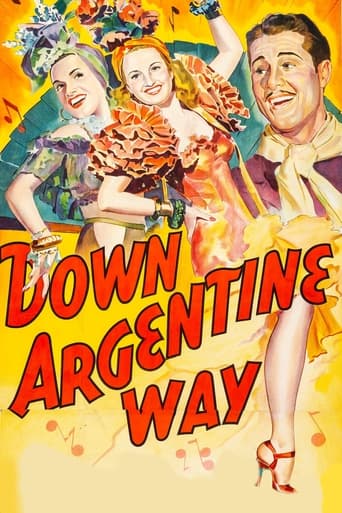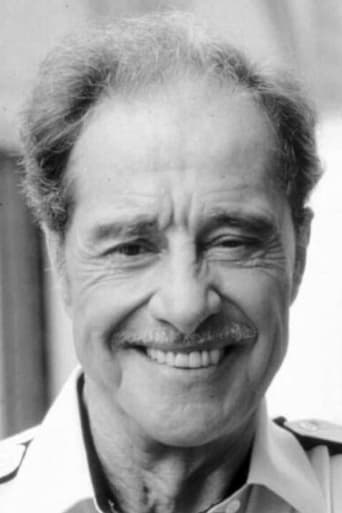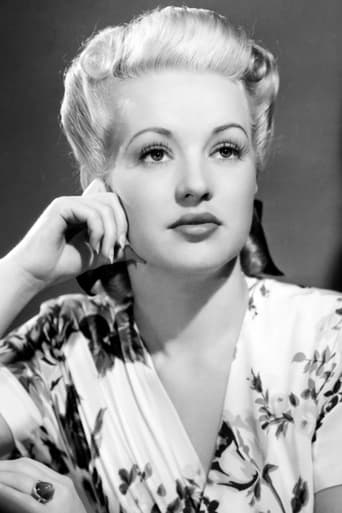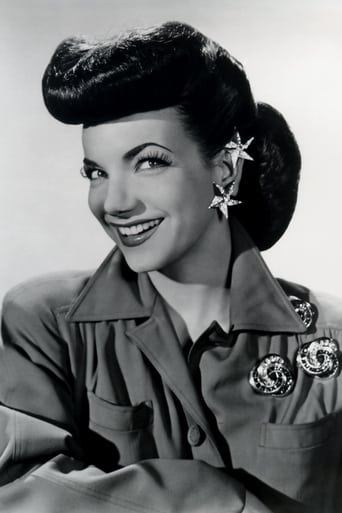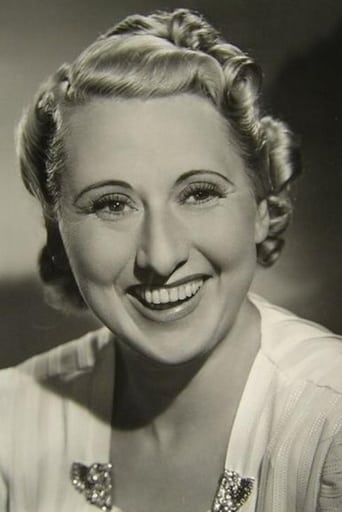Actuakers
One of my all time favorites.
Lachlan Coulson
This is a gorgeous movie made by a gorgeous spirit.
Lela
The tone of this movie is interesting -- the stakes are both dramatic and high, but it's balanced with a lot of fun, tongue and cheek dialogue.
Dana
An old-fashioned movie made with new-fashioned finesse.
mark.waltz
As America headed towards the traumas of World War II, Hollywood entertainment (as well as Broadway) became obsessed with all things Spanish. Here, there's only a little bit of Carmen Miranda (basically a specialty act playing herself), and a lot of Don Ameche and Betty Grable as the lovers who meet and fall in love as a result of a sale of a racehorse. Grable rose to "A" status to eclipse Alice Faye as 20th Century Fox's leading musical star, and her likability is exceeded only by her enormous talents as a singer and dancer. In the 1940's, only Rita Hayworth would surpass her as looking so good in Technicolor. Charlotte Greenwood is around to give her traditional high kicks (which she would continue to do into the mid 1950's as "Oklahoma's" Aunt Eller) and J. Carrol Naish provides some memorable comic relief.The color photography is sumptuous and every detail of this film is exquisite, from the sets and costumes, to the choreography and pacing. Miranda repeats the song "South America Way" which she had introduced earlier on Broadway, and later gets to perform "Mamãe Yo Quero" which has been burlesqued by many, from Mickey Rooney in "Babes on Broadway" to Jerry Lewis in "Scared Stiff" (Miranda's last film). Even Woody Allen got into the spoofing of this song, utilizing Miranda's popular recording to add some period detail to the wonderful "Radio Days". Grable is a definite dream in the wonderful title song and gets a sweet duet with Ameche. When Greenwood finally gets to show what she's made of with "Sing to Your Senorita", the price of admission has been paid, and the pleasure is doubled. Director Irving Cummings takes great detail in taking a typical romantic story to higher levels and the obvious box- office appeal is truly apparent.
MartinHafer
Although as of today I have reviewed more films on IMDb, very, very few of them have been musicals. It just happens to be a genre that I don't particularly like, though I am not saying they are bad movies--it just isn't my favorite type of film. Sure, I have a few exceptions, but by and large, I am NOT a musical fan. Because of this, that makes my giving DOWN ARGENTINE WAY very special indeed for me to give it an 8--almost a 9. There is just so much energy and so much to love with this film I couldn't help myself.First, before jumping into the review, you've gotta admit that the casting in the film is very strange! If you read on IMDb about it, you will learn that some other actors (including some Hispanics) were originally scheduled to be in this production but odd things kept happening to force them to pick other actors. While much of the film is set in Argentina, Don Ameche and Henry Stephenson are cast as Argentinians!! While Ameche is able to do a credible accent and they very effectively dubbed someone else singing his songs in Spanish, Stephenson doesn't exactly look South American. Sure, there are plenty of light-skinned folks down there, but his accent came and went like the wind!! Often he forgot it entirely. Now some of the other actors did a better job, such as J. Carroll Naish--who always had a knack for playing almost any ethnicity. Russian-born Leonid Kinskey also did a credible job. Also, while she came by her accent quite naturally, why did they put a Brazilian (Carmen Miranda) in the film? Argentina is NOT the same as Brazil and the languages are very, very different. Now I am not complaining about her amazing singing--just how odd it was to see her in a movie set in a Hispanic nation.As for the singing, I didn't mind the songs because some were especially nice. Carmen Miranda's two songs were catchy and cool (especially "Mamãe Eu Quero"), the Nicholas Brothers' dancing was amazing (though in one, they were singing in another language that I assume was dubbed) and the songs with Ameche and co-star Betty Grable were very nice as well.The plot involves Don coming to America and almost selling a prize horse to Grable. However, when he learns that she is the daughter of a man who his own father hates, he calls off the deal and heads back home. He really wanted to sell it to her--after all, she's one hot tomato (that's "pretty" in 1940s lingo), but it's a point of honor and he must obey his father. However, Betty isn't to be ignored and travels to Argentina with her older and very hot-blooded aunt (who is awfully funny and does some amazing dancing at the end). Naturally, Betty and Don fall in love, but the father is still standing in their way to happiness. What ever will they do?! The film gets high marks for excellence all around. What I particularly liked is what Leonard Maltin described as the "picture postcard" look of the film. The Technicolor is wonderful and the set designers outdid themselves to introduce lots of great complementary colors (including a lot of pastels) to make the picture practically pop off the screen.
bkoganbing
Nobody should expect to see Hamlet when watching Down Argentine Way. In fact the plot here is thinner and sillier than most of these fluff musical pieces. Still it's kind a fun.Don Ameche is up from Argentina in the USA looking to sell some horses and Betty Grable is looking to buy, the horse and Ameche. But once Don hears that Betty's character has the last name of Crawford, no sale, no way, no how. With mixed motives both looking to get even and an unspoken attraction for Don, Betty and Aunt Charlotte Greenwood take a trip to Buenos Aires for business and all different kinds of pleasure. We also meet Henry Stephenson, Ameche's father, and it does take the whole film to find just what he has against people named Crawford. The prize jumping horse of the Quintana family which is the character names of Ameche and Stephenson who gets turned into a racehorse by the old family trainer, J. Carrol Naish in another of his multitude of ethnic characterizations.Of course this film never got out of the Hollywood back lot at 20th Century Fox Studios and there are even fewer establishing shots of Buenos Aires than usual. The two best things about Down Argentine Way are the musical score written by Harry Warren and Mack Gordon and the specialties of Carmen Miranda and the Nicholas Brothers.This was Carmen's American debut and she opens the film with a song that was forever indelibly identified with her, South American Way. The other hit song in the film is the title song of the picture to which everyone in the cast sings and dances at some point. The notes here say that Don Ameche's voice was dubbed. If so the guy must have been a great soundalike. Probably could fool a voice print identification. Sure sounded like Don Ameche singing from other films I've seen.Look for a nice performance by Leonid Kinskey a rather inept gigolo with a few other sidelines.Down Argentine Way was done before Juan Peron took power so the place was viewed favorably. The Roosevelt administration actively encouraged films to be made showing South America in a favorable light like this one with an idea towards making sure they were allies in the World War we were heading for. It's a nice piece of fluff with good songs Betty Grable's famous legs and the one and only Carmen Miranda.
Nazi_Fighter_David
Carmen Miranda, known as "The Brazilian Bombshell", was the original Chica Chica Bum Chic gal of forties musicals – a large swash of Rousseau on the movie screens, a festive explosion of outrageous razzmatazz that may not have added much to culture but did add a lot to one's enjoyment of it… Everything about this happy demon (except her height) was larger than life: her behavior; her struggles with the English language as it tripped its way into her head and out through her mouth in accents thick and hilarious; her eyes as they shrank into slits and lost themselves behind her cheeks rising and swelling through the effort required to pronounce her tongue-twisting lyrics at rapid speed; the continual motion of eyes, mouth, shoulders, hips, arms, hands, fingers and feet, the latter supported by elevated platforms that heightened her appeal, and the ever more extravagant gowns that have inspired nightclub performers ever since – garlands of sequins, bowers of living blooms around her hips and breasts, and orchards of fruit growing out of her turbans… The total effect was that of some medieval fertility ritual goddess whose presence was a promise of fruitfulness
